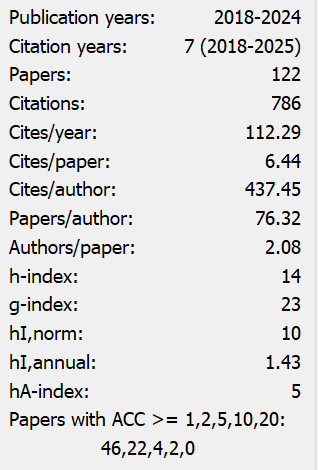Research on Green Finance Promoting the Development of Low-Carbon Economy
Abstract
Against the backdrop of global climate change and China's "dual carbon" goals, this study systematically explores the theoretical foundations, practical status, and operational mechanisms of green finance in promoting low-carbon economic development. It is revealed that green finance influences low-carbon transformation through multiple pathways, including capital orientation, risk management, technological innovation incentives, and policy synergy. However, challenges such as fragmented policy regulation, imbalanced market capital allocation, technological and data bottlenecks, and insufficient cross-regional coordination are identified. Drawing on international experiences, the research proposes optimization strategies focusing on policy integration, market mechanism activation, technological empowerment, and regional collaboration, offering theoretical and practical insights for deepening the integration of green finance and low-carbon economy.
References
[2] He, X., & Ren, J. (2024). The development of green finance in China: Current situation, problems and future prospects. Energy and Chemical Finance & Management, 3(03), 1–8. https://doi.org/10.1016/j.jechem.2024.06.024
[3] Yao, D., & Zhu, Z. (2020). The spatio-temporal evolution of the coupling and coordination of green finance and low-carbon economy: An empirical study taking the Yangtze River Delta Region as an example. Journal of Daqing Normal University, 45(02), 27–37.
[4] Li, M. (2025). The path and challenges of green finance facilitating the transformation of low-carbon economy. China Market, (05), 17–20.
[5] Ye, Q. (2020). A brief discussion on relevant measures of green finance promoting low-carbon economic development. Low Carbon World, 15(01), 160–162.
[6] Zhang, Y., Feng, N., & Wang, X. (2024). Can the green finance pilot policy promote the low-carbon transformation of the economy? International Review of Economics and Finance, 93(PA), 1074–1086. https://doi.org/10.1016/j.iref.2024.03.012
[7] Dunbar, K., & Treku, N. D. (2025). Do energy transition investment flows aid climate commitments? Energy Economics, 142, 108163–108163. https://doi.org/10.1016/j.eneco.2024.108163
[8] Zhang, C., Liu, S., Chen, G., et al. (2024). Green finance and the silver economy: Catalyzing China’s low-carbon development. Frontiers in Environmental Science, 12. https://doi.org/10.3389/fenvs.2024.1406812
[9] Taimoor, H., Yasir, K., Adnan, S., et al. (2023). Green financing strategy for low-carbon economy: The role of high-technology imports and institutional strengths in China. Journal of Cleaner Production, 415. https://doi.org/10.1016/j.jclepro.2023.137859
[10] Khurshid, S., Awan, A., & Ahmad, S. (2025). Econometric insights into inclusive green growth, technological innovation and financial development dynamics in Asia: Aggregated and disaggregated data analysis. Environment, Development and Sustainability, (prepublish), 1–30. https://doi.org/10.1007/s10668-025-06179-3
[11] Azimi, N. M., Raham, M. M., & Maraseni, T. (2025). Green trade, governance, finance, and energy efficiency: Shaping environmental landscape in global powerhouses. Journal of Environmental Management, 385, 125674. https://doi.org/10.1016/j.jenvman.2025.125674
[12] Meng, S., Duan, Y., & Zhou, W. (2025). How does green finance policy reduce the carbon emissions of polluting enterprises? A mediation effect analysis of inclusive finance. Research in International Business and Finance, 77(PA), 102914–102914. https://doi.org/10.1016/j.ribaf.2025.102914
[13] Wen, B., He, Y., Jing, X., et al. (2025). Advancing renewable energy and green finance for economic growth and ecological resilience. Energy Strategy Reviews, 59, 101747–101747. https://doi.org/10.1016/j.esr.2025.101747
[14] Wu, W., & Lin, X. (2025). Digital inclusive finance for green transformation: Insight from green innovation, industrial upgrading, and employment quality. Journal of Innovation & Knowledge, 10(3), 100726–100726. https://doi.org/10.1016/j.jik.2025.100726
[15] Hassan, M., Lee, Y. J., Rouge, L., et al. (2025). The impact of green public finance and green taxes on environmental and non-environmental innovation. Research in International Business and Finance, 76, 102868–102868. https://doi.org/10.1016/j.ribaf.2025.102868
[16] Ali, A., Faisal, F., Isiksal, Z. A., et al. (2025). Do green finance and health expenditures lessen the ecological footprint to ensure sustainable development? Innovation and Green Development, 4(2), 100223–100223. https://doi.org/10.1016/j.igd.2025.100223
[17] Li, X., Zheng, Z., Shi, D., et al. (2025). How government green fund reduce corporate carbon emissions. Journal of Environmental Management, 380, 124999. https://doi.org/10.1016/j.jenvman.2025.124999
[18] Xiao, B., & Li, H. (2025). Financial efficiency, green innovation and green total factor productivity. Finance Research Letters, 76, 107005–107005. https://doi.org/10.1016/j.frl.2025.107005
[19] Yang, X., Hunjra, I. A., Alharbi, S. S., et al. (2025). Towards more inclusive finance: Exploring the mystery of low carbon green technological innovation. Research in International Business and Finance, 78, 102991–102991. https://doi.org/10.1016/j.ribaf.2025.102991
[20] Shi, L., & Shang, M. (2024). The promoting role of green finance reform and innovation on the sustainable development of low-carbon enterprises – An analysis based on recursive neural networks. Applied Mathematics and Nonlinear Sciences, 9(1). https://doi.org/10.2478/amns-2024-2885
[21] Xu, W., & Qi, J. (2025). The impact of green finance and renewable energy development on the low-carbon transition of the marine industry: Evidence from coastal provinces and cities in China. Energies, 18(6), 1464–1464. https://doi.org/10.3390/en18061464

This work is licensed under a Creative Commons Attribution 4.0 International License.
Copyright for this article is retained by the author(s), with first publication rights granted to the journal.
This is an open-access article distributed under the terms and conditions of the Creative Commons Attribution license (http://creativecommons.org/licenses/by/4.0/).


























